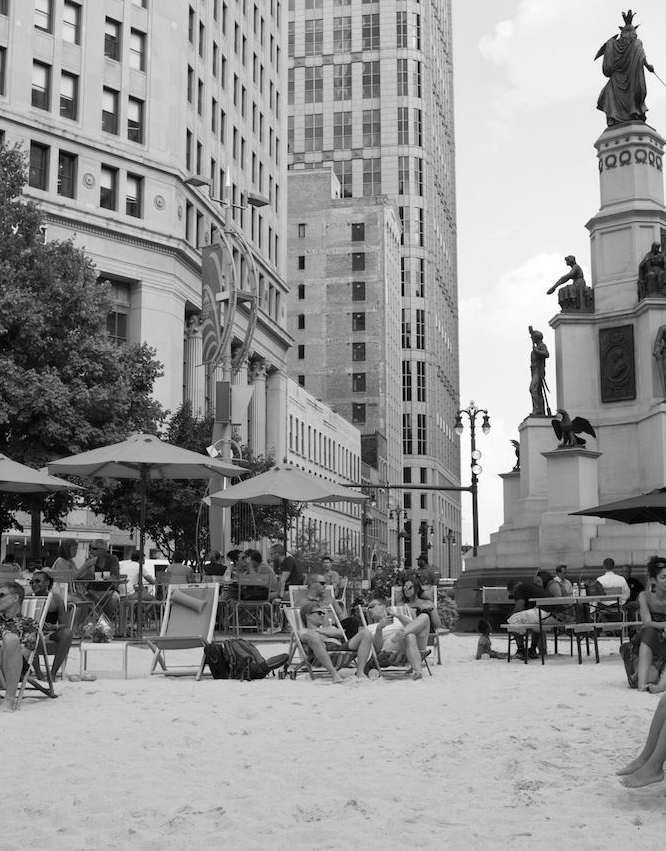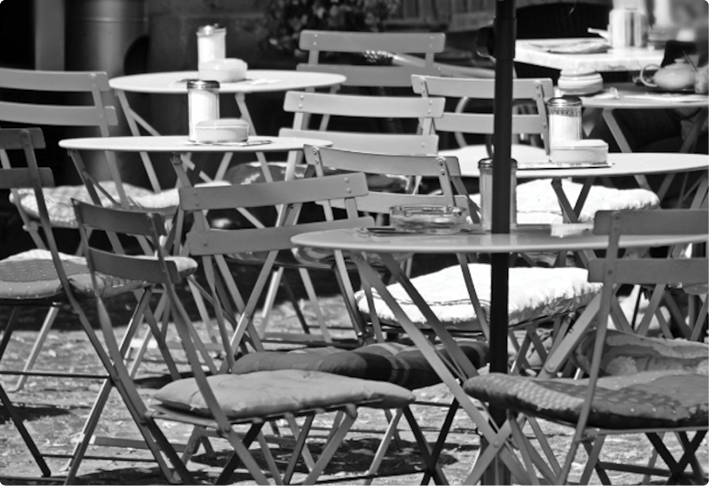…Along the Walkable Streetscape, provide places for people to sit and relax comfortably.

__Problem-statement: Along streets and in other public spaces, people need to do more than walk — they need to sit too. And they need to be able to change the position of their seating depending on their activity.__
Discussion: Sometimes people are comfortable in public spaces with rigid benches that face in only one direction. Many times, however, they want to turn toward their companions, or toward interesting things happening within the public realm. For this reason, they need movable seating. This need is greatest at the edges of public space, where people are most likely to congregate and view others.¹
This feature poses a problem for security, since the seats can potentially be stolen. There are two remedies for this problem: either tether the seats to secure cables, or provide seating via adjacent private businesses, who can remove and store them at closing time.

Movable chairs — and tables — in New York City.
This pattern, which may appear trivial, in fact goes to the heart of adaptive design philosophy and practice. The shaping of space and the positioning of built components are influenced by an enormous number of subtle factors, often perceivable only on the actual site. These may include: direction of sunlight; prevailing wind; shadows from adjoining buildings; psychological effects from nearby traffic; very fine adjustments to adjust to existing pedestrian flows; and so on. For this reason, the odds of getting the placement of fixed public seating exactly right by fitting them through premeditated design are infinitesimally small. Moreover, since conditions change all the time, an accidentally correct permanent placement will not continue to be valid in the future. On the other hand, having movable seats lets the users make the adjustments themselves. There is also the psychological feeling of control and ownership if a user can move a chair, even slightly. This freedom allows people to enjoy a public space.
__Therefore: Provide ample seating within the walkable public realm, especially at the edges. Make sure that at least some of the seating is movable, so that people can adjust their position for comfort.__

Provide Human-Scale Detail adjacent to the seating. Give the chairs Handles and Friendly Surfaces. …
notes
¹ A classic study on movable chairs was done by William H. Whyte in his 1980 New York public space study. See Whyte, W. H. (1980). The Social Life of Small Urban Spaces. New York: Project for Public Spaces.
See more Public Space Patterns